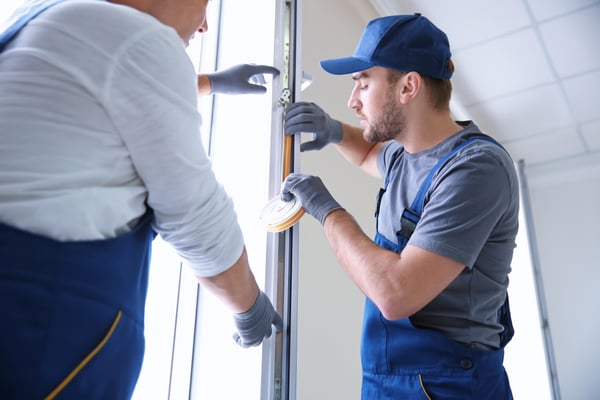Air leakage is a problem that affects many homes and apartments, increasing heat gain during the summer and heat loss during the winter. As a result, HVAC systems become less efficient as they are forced to work harder year-round. During a winter storm like the one that began on February 13, air leakage can even be dangerous — blackouts knock out heating systems and homes can reach freezing temperatures.
Houses and apartments can be left without heat, even if they use natural gas or oil for heating. Combustion heaters need an air handler to distribute the hot air and an extraction system to remove dangerous gases. Using an unvented combustion heater is extremely dangerous as you will be exposed to carbon monoxide, a highly toxic gas.
Are you planning a residential construction project? Make sure your homes and apartments have reliable heating systems.
This article will provide some recommendations for keeping cold air out of your home and apartment. Ideally, hire a professional energy audit and blower door test to detect and seal any air leaks. Some air leaks are difficult to find, but they also cause significant heat loss during the winter months.
1) Familiarize yourself with air sealing materials

Air leaks can be found around fixed components like electrical and plumbing fixtures , but also around moving elements like doors and windows. The type of air sealing material you should use depends on where the leak is located.
- Caulking is used for air leaks that are not exposed to movement, such as those around plumbing fixtures. Some examples of caulking materials are acrylic latex, expanding polyurethane foam, and elastomeric sealant.
- Caulking is used when you need to seal moving openings, such as door and window edges. Some examples of caulking materials are foam tape and rigid strip gaskets.
Going to a home improvement store can be dangerous during a winter storm. As an emergency solution, you can block air leaks with towels, blankets, and duct tape. Although it is much less effective than using air sealing materials, it can help during severe weather conditions.
2) Perform a quick inspection

Energy consultants use fan door testing and thermal imaging cameras to ensure all air leaks are found. However, you can find many of them without special equipment. A simple DIY method is to wet your hand and feel the temperature around doors and windows. If there is an air leak, you may feel cold air outside. Thermal imaging cameras are safe and not difficult to use if you can get one, but they are expensive.
Remember that air leaks don't just affect doors and windows. You're also likely to find them in the attic, basement, and near plumbing or electrical fixtures. In many cases, the cracks will be visible before you even feel the temperature with your hand.
3) Do not use combustion heaters in enclosed spaces

Even when doors and windows are closed and most air leaks have been sealed, some cold air will still enter. Consider that heat is also lost through conduction and convection, even in a 100% airtight space. However, you should never use a combustion heater in an enclosed space as dangerous gases are released inside.
Many gases produced by combustion appliances are harmful. Carbon monoxide (CO) is especially dangerous and should not be confused with the carbon dioxide (CO2) you exhale. CO2 must reach a concentration in the air of about 10% to be dangerous, while CO is lethal at concentrations below 1%. Carbon monoxide detectors are affordable and can save your life.
If you need additional heat in your home or apartment, a portable resistance heater is recommended. It is more expensive to use than a combustion heater as it consumes kilowatt hours but does not release toxic gases!
Conclusion
When staying home during a winter storm, you can stay warm by sealing air leaks and using a safe space heater. You should never use a heater with a flame unless it has adequate ventilation. Ideally, air leaks should be sealed with caulking and caulking. However, you can use duct tape and blankets as a temporary solution. The best way to find all air leaks is through a professional energy audit, but some leaks can be detected without specialized methods.

